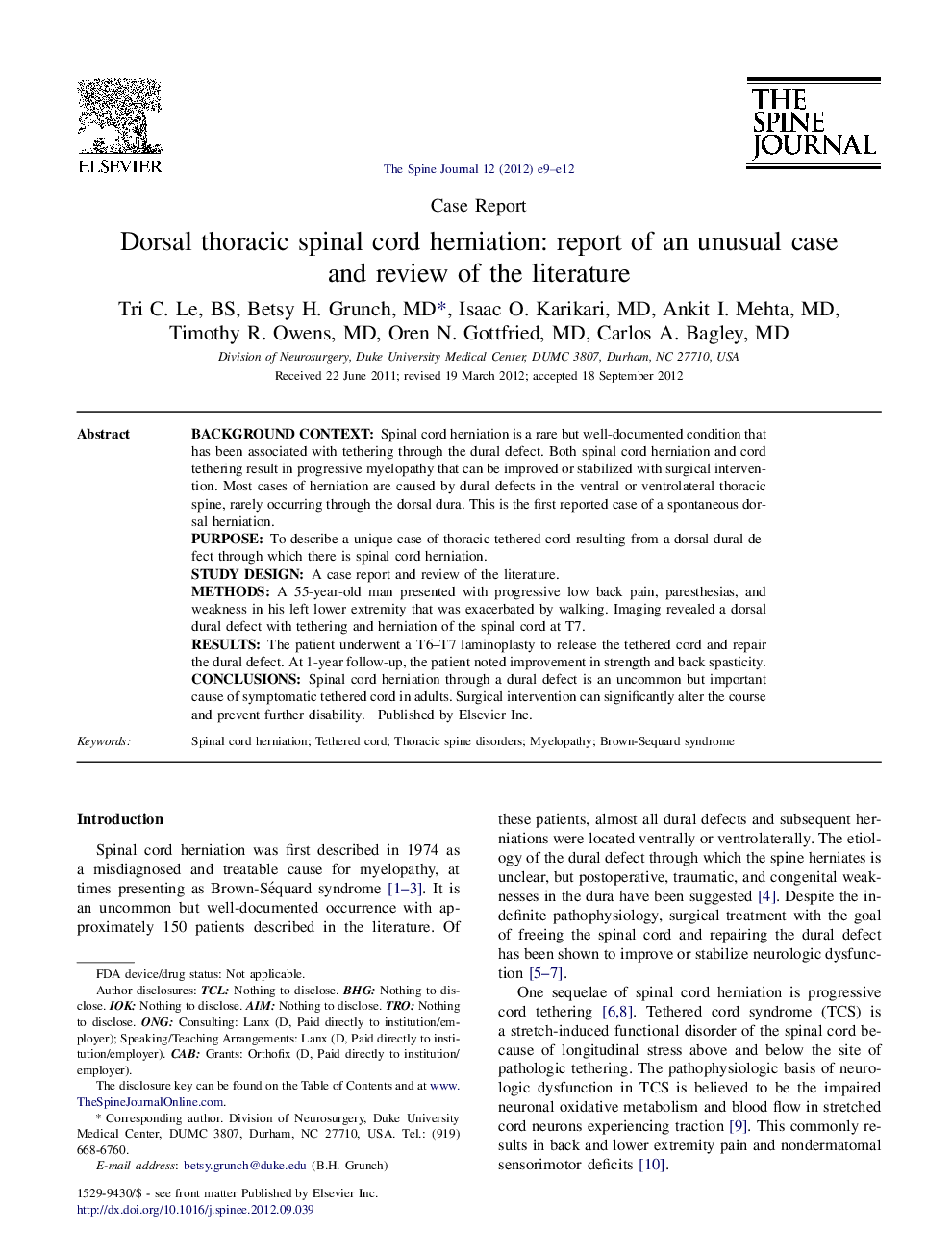| Article ID | Journal | Published Year | Pages | File Type |
|---|---|---|---|---|
| 4097440 | The Spine Journal | 2012 | 4 Pages |
Background contextSpinal cord herniation is a rare but well-documented condition that has been associated with tethering through the dural defect. Both spinal cord herniation and cord tethering result in progressive myelopathy that can be improved or stabilized with surgical intervention. Most cases of herniation are caused by dural defects in the ventral or ventrolateral thoracic spine, rarely occurring through the dorsal dura. This is the first reported case of a spontaneous dorsal herniation.PurposeTo describe a unique case of thoracic tethered cord resulting from a dorsal dural defect through which there is spinal cord herniation.Study designA case report and review of the literature.MethodsA 55-year-old man presented with progressive low back pain, paresthesias, and weakness in his left lower extremity that was exacerbated by walking. Imaging revealed a dorsal dural defect with tethering and herniation of the spinal cord at T7.ResultsThe patient underwent a T6–T7 laminoplasty to release the tethered cord and repair the dural defect. At 1-year follow-up, the patient noted improvement in strength and back spasticity.ConclusionsSpinal cord herniation through a dural defect is an uncommon but important cause of symptomatic tethered cord in adults. Surgical intervention can significantly alter the course and prevent further disability.
